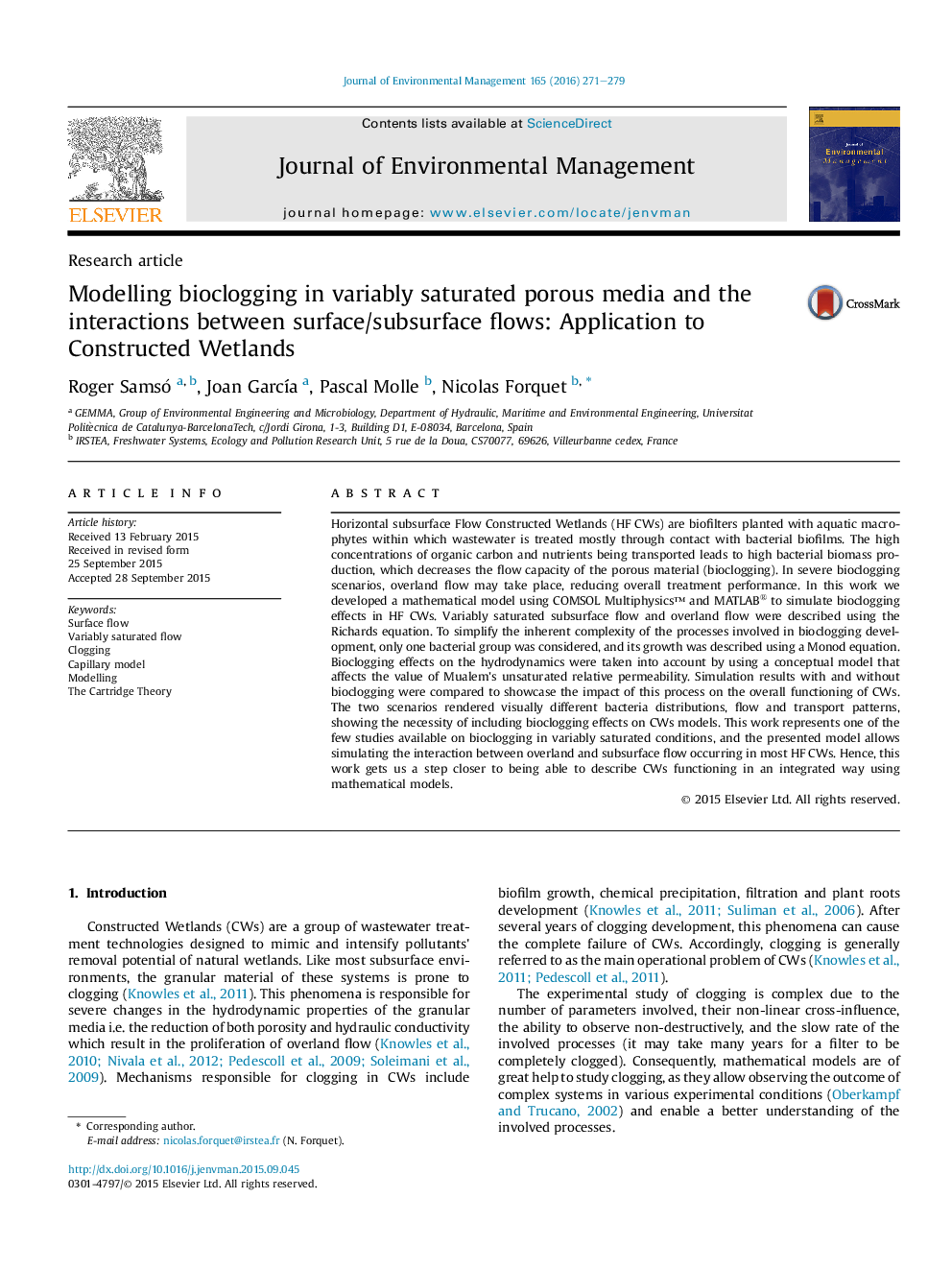| کد مقاله | کد نشریه | سال انتشار | مقاله انگلیسی | نسخه تمام متن |
|---|---|---|---|---|
| 1055498 | 1485247 | 2016 | 9 صفحه PDF | دانلود رایگان |
• This work presents a model to describe bioclogging in variably saturated conditions.
• The model is able to describe interactions between porous media/overland flows.
• The model was applied to simulate bioclogging in Constructed Wetlands.
• Results of simulations considering and neglecting clogging were compared.
• Bioclogging modifies bacteria dynamics and flow and transport patterns in wetlands.
Horizontal subsurface Flow Constructed Wetlands (HF CWs) are biofilters planted with aquatic macrophytes within which wastewater is treated mostly through contact with bacterial biofilms. The high concentrations of organic carbon and nutrients being transported leads to high bacterial biomass production, which decreases the flow capacity of the porous material (bioclogging). In severe bioclogging scenarios, overland flow may take place, reducing overall treatment performance. In this work we developed a mathematical model using COMSOL Multiphysics™ and MATLAB® to simulate bioclogging effects in HF CWs. Variably saturated subsurface flow and overland flow were described using the Richards equation. To simplify the inherent complexity of the processes involved in bioclogging development, only one bacterial group was considered, and its growth was described using a Monod equation. Bioclogging effects on the hydrodynamics were taken into account by using a conceptual model that affects the value of Mualem's unsaturated relative permeability. Simulation results with and without bioclogging were compared to showcase the impact of this process on the overall functioning of CWs. The two scenarios rendered visually different bacteria distributions, flow and transport patterns, showing the necessity of including bioclogging effects on CWs models. This work represents one of the few studies available on bioclogging in variably saturated conditions, and the presented model allows simulating the interaction between overland and subsurface flow occurring in most HF CWs. Hence, this work gets us a step closer to being able to describe CWs functioning in an integrated way using mathematical models.
Figure optionsDownload as PowerPoint slide
Journal: Journal of Environmental Management - Volume 165, 1 January 2016, Pages 271–279
